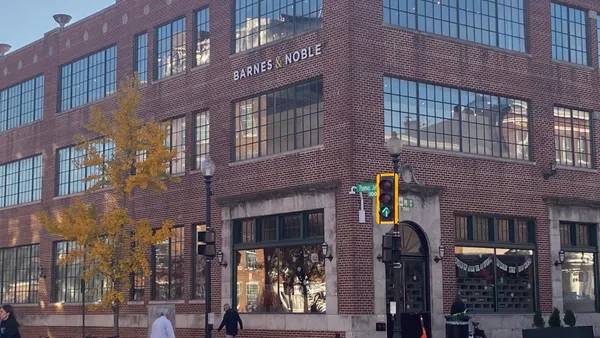A cash infusion appears to have pulled Bed Bath & Beyond back from the brink of imminent bankruptcy.
The retailer announced late Tuesday it secured about $225 million through a stock offering. Bed Bath & Beyond is expecting to earn an additional $800 million in stock-related proceeds over time. The company also plans to draw $100 million from a first-in-last-out loan.
If all the anticipated earnings come to fruition, the company would raise just over $1 billion.
"This transformative transaction will provide runway to execute our turnaround plan,” CEO Sue Gove said in a statement. The cash will enable the retailer to immediately repay its outstanding debt, the company said in its statement. One of the company’s outstanding debts includes a $28 million missed interest payment that was due Feb. 1, according to The Wall Street Journal.
Analysts with Wedbush, led by Seth Basham, said in a Wednesday note that the company’s ability to secure financing is “against the odds” and reduces the short-term risk of bankruptcy. “However, this lifeline comes at an incredible cost to existing shareholders who could see over 80% dilution from convertible preferred shares and warrants if fully executed,” the analysts said.
Bed Bath & Beyond’s turnaround plan also includes shrinking its store footprint even further. The retailer already announced 150 store closures last year and an additional 87 closures in January. By the end of its downsizing, Bed Bath & Beyond will have reduced the footprint of its namesake banner by more than half since the start of 2022. Ultimately, the company expects to operate about 360 Bed Bath & Beyond stores and 120 BuyBuy Baby stores. Last month, the company announced the closure of its entire Harmon beauty chain of about 50 stores.
The company had 771 Bed Bath & Beyond stores last year, according to regulatory filings.
Bed Bath & Beyond also said it plans to streamline and realign its infrastructure and operations. As part of that strategy, Gove said the company will prioritize the availability of national and emerging direct-to-consumer brands. “As we make important strategic and operational changes, we will continue to take disciplined steps to enhance our cost base and improve our financial position,” Gove said.
The company said it plans to retain its most profitable and geographically well-positioned stores. Digital is expected to grow as a result, and Bed Bath & Beyond expects profitability in that channel to improve as well.
If the company successfully executes its turnaround plan, Wedbush estimated a run-rate EBITDA of up to $250 million by late 2023. However, the stock offering and turnaround strategy will likely leave “no value for equity holders” since Bed Bath & Beyond may carry nearly $2 billion in debt after the stock offer and related fundraising transactions.
Bed Bath & Beyond is still on shaky ground, Wedbush warned. They said failure to secure the additional $800 million or an inability to implement the turnaround plan this year “could put the company back on bankruptcy’s doorstep.”














